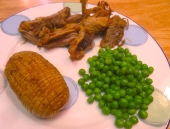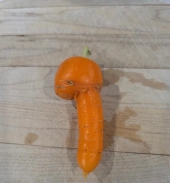I had trouble for years--usually they did germinate, but weren't fit to harvest till fall and then would mostly be very small. Often pale as well. Here's what I do now: first of all I once read that if you plant your onions and carrots in alternating rows, each inhibits the fly that bothers the other. I tried it and it seemed to work so I keep doing it. The downside is that this means I don't plant the carrots till April, when the onions are up so the carrot rows are well marked. No wait--that's not first, first is soil prep, which I mostly do in the fall prior to planting in spring. I have clay soil, and I too have found that adding sand--I have added it to ALL my beds but especially for sure those that will have carrots. I add that after turning the soil with a shovel--I don't agree with the "tilling is a crime" idea, though I think it best to keep it to once a year. Then I add compost or preferably, leafmold, and probably sand. Then I work it with my hands till it's soft and smooth, no sizable lumps (I do this also for lettuce and spinach--other crops don't need a fine seedbed). Next, I grow Danvers or Red Cored Chantenay, two varieties that do well in clay. Then I have to water a lot because as others have said, it typically takes two or even three weeks for the dang things to emerge (yes I put a radish seed every foot or two to mark the rows) and they're planted shallowly. For me, they grow very slowly even after emergence--but when I yank the onions the first week of July and put down mulch between the now one-foot-apart rows, they seem to take off and grow faster. By then I've thinned them at least once.Mty best crop was last year, and I think it was because of the longest drought we ever had, from the beginning of June till the first frost in mid November. I watered them a thousand times or so, so they got ENOUGH water--but it was only in the rows, and probably didn't last long. So the worms or flies or whatever it is that makes those black tunnels in the top part of the carrot, barely hit at all--and therefore I was able to leave the carrots past early August, and they got bigger.










